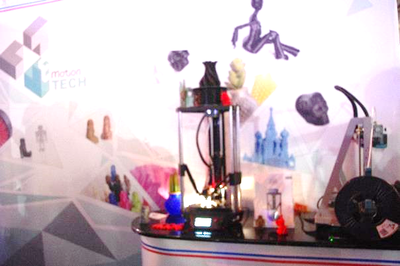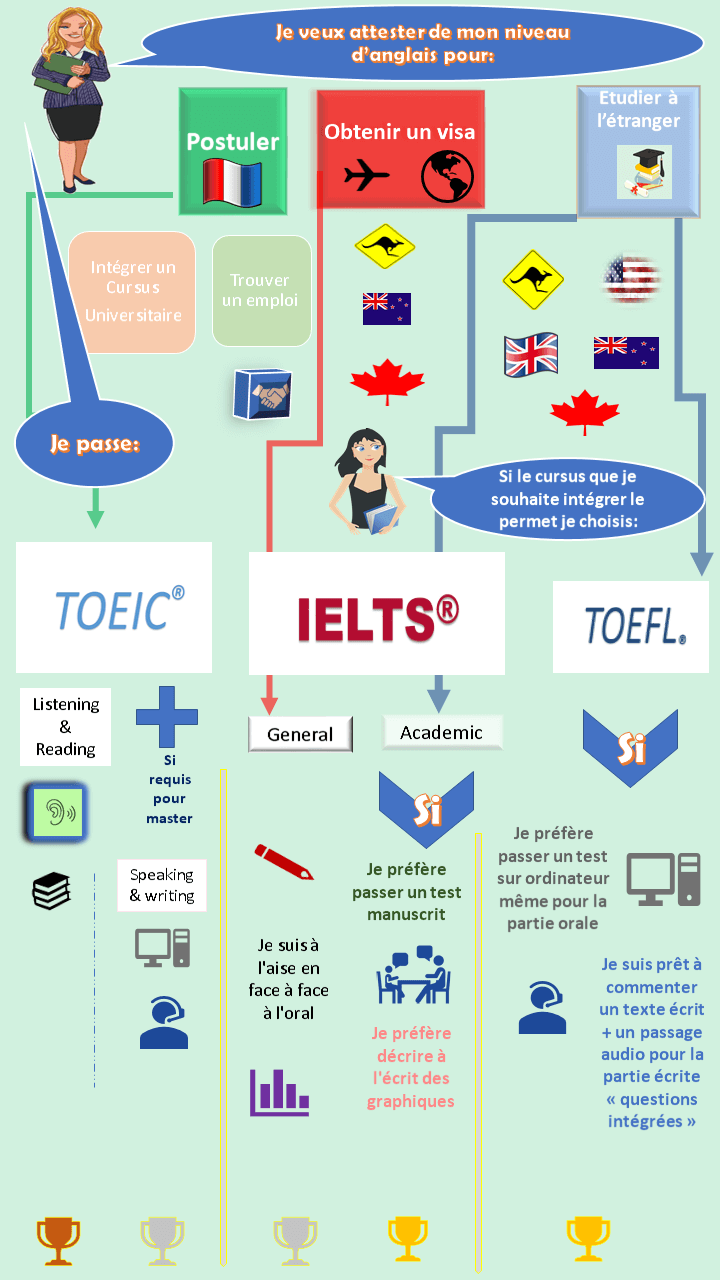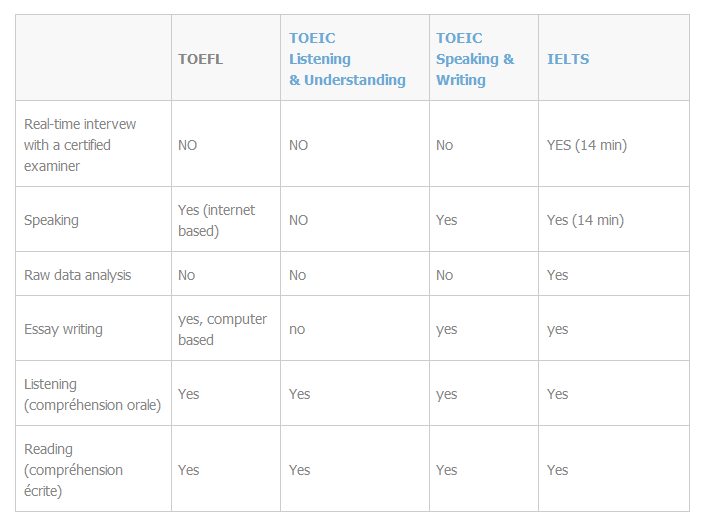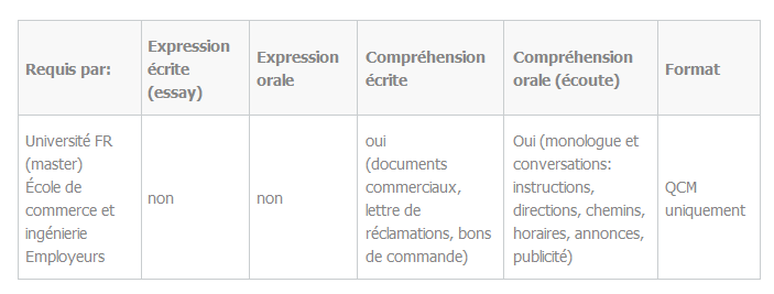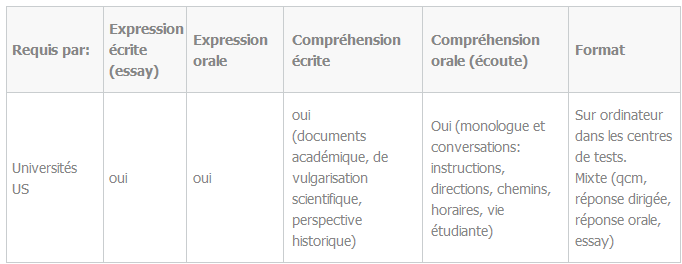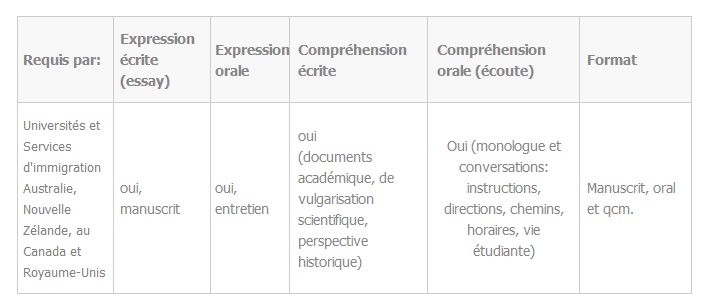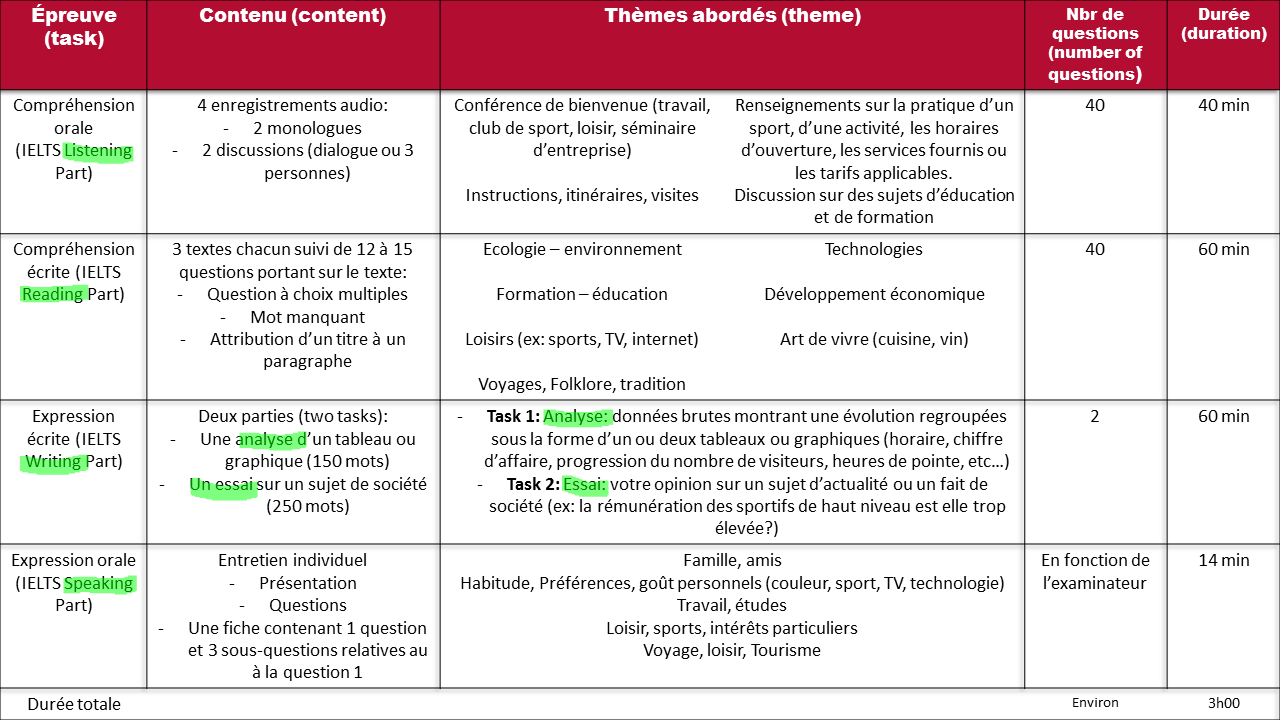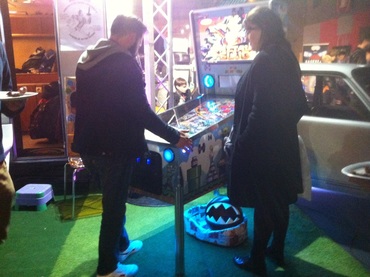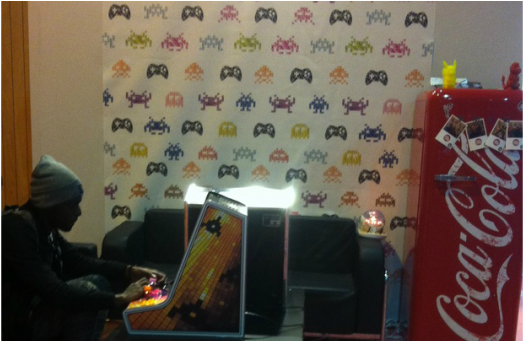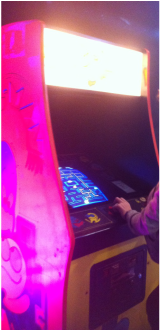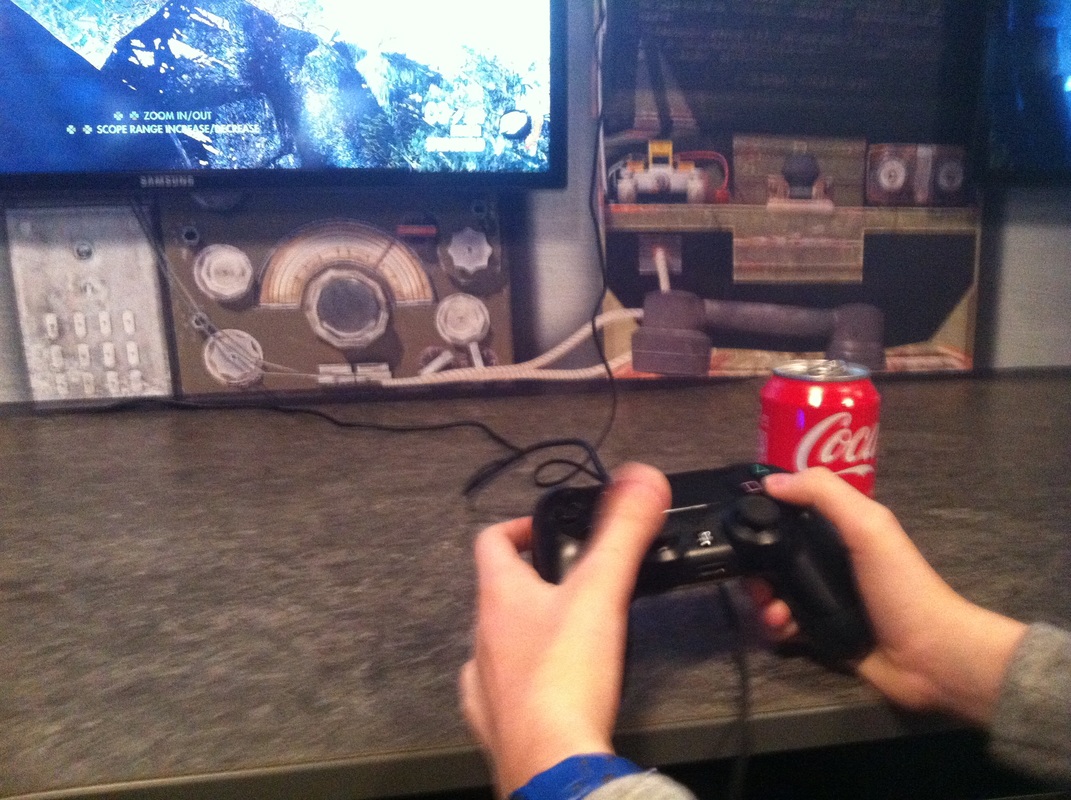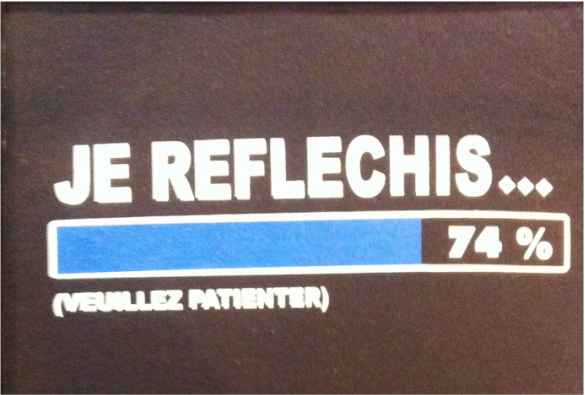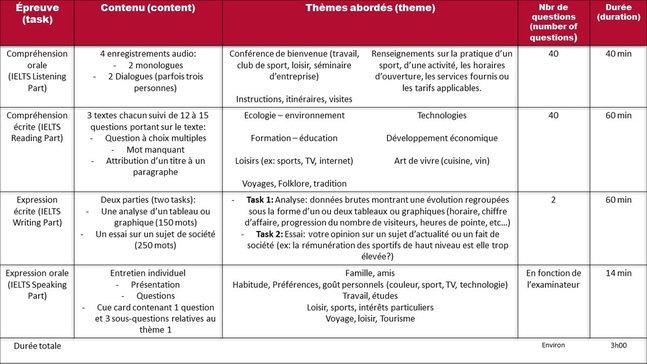|
Cette année la PGW a tout misé sur les animateurs, les commentateurs, les jeeps et les dragons. Que ce soit sur le stand Square Enix ou celui de Nintendo largement dominé par l'évènement de la sortie de la nintendo switch et même chez Ubisoft avec Just dance, cette année de nombreux commentateurs font partager l'action aux spectateurs en live. Les stands à ne pas manquer à la PGW 2017Pendant ce temps PS4 propose des bulles de jeux de l'espace pour tester Grand Turismo avec les volants Thrustmaster. Un étrange défilé d'humain robot ou de robot humain dans des vitrines interpelle. Grace à un partenariat avec Netflix, un jeu Stranger Things verra le jour en 2018. Un stand vous propose d'acheter une mini imprimante 3d pour 400€. Elle vous permettra de fabriquer vous même les figurines en vente dans les stands du pavillons 1, juste après les perruques. On note aussi la présence de Matériel avec des PC transparent qui se transforment tel un transformer, de la Fnac et de LDLC. Le stand avec le meilleurs son est celui de Arcade coin. Ils ont des jeux vintage (galaga, donkey kong) et un très bon dj. Déposez vos parents dans ce stand (ou devant le podium Just dance) et venez les récupérer lorsque vous aurez fini de tester le dragon x-box et de faire customiser votre manette.
Commentaires
1-Le plus geek: The Code (ABC) - The geekest
2- Le plus existentiel: Please like me (ABC) - The most existential
3-Le plus pratique: Margot Robbie Defines 50 Australian Slang Terms - The most handy
4-Le plus politique: The Chaser’s War On Everything (2006 – 2009) - The most political
5-Le plus flippant: WOLF CREEK (TV series) - The freakiest
6-Le plus LGBT-friendly: Barracuda - The most LGBT-friendly
7- Le plus cinglant: The Slap (ABC-1) - The most stinging
8- Le plus accessible: Castaway - The most accessible to non native speakers
9-Le plus Tuche: Here come the Habibs - The most controversial
10-Le plus drôle: Playground insults (BBC RADIO) - the Funniest
11-Le plus vrai: Underbelly (Nine Network) - The most realistic
12- Le plus délicieux: My kitchen rules - The most delicious
13 - Le plus absurde - No activity - the most absurd
Listen to or watch the full playlist on our Youtube channel. Special thanks to Mr. and Mrs W. (Luke and Camille) from Brisbane, Australia.
Le TOEIC Listening & Understanding n'évalue que la capacité d'écoute en anglais et la compréhension écrite dans un domaine bien particulier: l’environnement de travail. C'est pourquoi il s'agit du test de langue le plus prisé des employeurs français. Il peut être complété par le TOEIC Speaking & Writing mais son coût s'en trouve alors considérablement augmenté. La partie orale est donc souvent laissée à l'appréciation des RH en charge de mener les entretiens. Si le TOEIC est le test le plus demandé en France pour les cadres, c'est parce qu'il est en réalité mal connu des employeurs et RH. Certes le TOEIC teste l'aptitude d'un candidat à comprendre l'anglais pratiqué dans la relation de travail et le vocabulaire employé est bien en rapport avec l’environnement de travail. Cependant l'examen utilisé en majorité par les employeurs français ne comporte aucune évaluation de l'expression écrite ou orale du candidat. En d'autre termes, il n'y a ni test oral, ni test écrit, à moins de passer les deux TOEIC. Car il y a en réalité deux TOEIC:
Seul le second test le niveau du candidat à la fois en expression écrite et orale mais il n'est que très rarement requis en France par les employeurs ou les masters. Ainsi, lorsqu'un candidat a un score de 850 au TOEIC, son score démontre qu'il comprend l'anglais écrit et parlé dans un contexte de travail, mais ne donne aucune indication sur sa capacité à s'exprimer à l'oral en anglais. Le TOEIC est très utilisé en Asie non seulement pour s'assurer que la main d’œuvre (agent de maîtrise et cadres) comprend des instructions basiques en anglais mais également à titre d'entrainement dans une optique de progression et de promotion des équipes. Le plus universitaire: Le TOEFL Au delà de la compréhension écrite et orale, le TOEFL teste l'aptitude du candidat à s'exprimer en anglais aussi bien à l'écrit (sous la forme d'essai et de réponses courtes) qu'à l'oral dans un contexte universitaire. Ainsi, ce qui est testé, c'est la capacité d'un candidat à évoluer sans encombre dans un environnement estudiantin mais également d'étudier en anglais. C'est pourquoi il est requis pour intégrer les universités américaines. Le TOEFL (internet-based) est un test qui contient une partie écrite et une partie orale. Toutefois, à la différence de l'IELTS il ne comporte pas d'entrevue avec un examinateur. Concrètement, lors de l'épreuve orale du TOEFL, le candidat répond à des questions pré-enregistrées par l'intermédiaire d'un casque doté d'un micro. Les réponses orales du candidat sont enregistrées et analysées lors de la correction. Le plus complet: l'IELTS L'IELTS est le moins connu des tests de langue mais il s'agit du test le plus complet. Il évalue toutes les compétences en un seul test (oral, écrit, compréhension, écoute), s'assure que le candidat est capable d'analyser des données en anglais et comporte un entretien oral avec un examinateur. C'est pourquoi il est requis pour obtenir un visa d'étudiant ou de travail en Australie, en Nouvelle Zélande et dans certaines universités Anglaises et Canadiennes. L'IELTS comporte une partie orale qui n'est pas enregistrée et qui se déroule avec un examinateur avec lequel le candidat doit interagir. A la différence du TOEIC la partie oral et expression écrite n'est pas en supplément et ne fait pas l'objet d'un examen séparé. Ainsi l'IELTS est celui qui présente le caractère le plus complet. C'est la raison pour laquelle, ce test est de plus en plus demandé par les universités anglophones et par les services d'immigration comme condition à l'obtention d'un visa de travail. tableau des epreuves ielts
Need a quick and easy to make recipe? Look no further, we have great French / English recipes that combine both cooking and language tips. Close to perfect potato hashbrown
Real easy-to-make tasty guacamole
Delicious Parisian Chocolate Mousse
Wholesome Meat loaf
Delicious crêpes in 10 minutes tops!  La Paris Game Week a ouvert ses portes à la presse mercredi soir Porte de Versailles. Le salon dédié au jeux vidéos s'étend sur 3 niveaux. Le premier se concentre sur les jeux de consoles, le second sur les jeux à destination des teens (8-14) et le troisième pour les jeux PC et les serious games. La paris game week c'est l'occasion pour les passionnés de tester tout les jeux en avant-première, bien avant leur sortie. C'est aussi un bon moment à partager en famille ou entre amis pour se déguiser (cosplay), chanter sur le stand "The VOICE" et redécouvrir les jeux "old school" sur les stands "Retro Gaming". Mesdames, mesdemoiselles, la PWG est également l'endroit où faire des rencontres. Pour peu que vous ayez un intérêt aussi éloigné soit il pour les jeux vidéos, leurs graphismes, leur univers, leurs sons ou leurs histoires, vous n'aurez aucun mal à engager la conversation. De plus vous n'aurez pas ou très peu de compétition. Peu de femmes se rendent dans ce genre de salon. Les gamers disent beaucoup de grossièretés lorsqu'ils jouent c'est un fait. Mais en public, ils sont bien élevés, courtois et souvent enclins à secourir une femme en détresse. Après tout, trouver la princesse et la sauver est souvent le seul et unique but de nombreux jeux vidéos. Voici les 12 meilleurs stands à visiter à la Paris Game Week! 1. BATTLEFIELD Le stand Battelfield et ses 70 stations de jeux. Une vraie tuerie. Attente: longue 2. Starwars 3. Le stand canal plus - goodies a gagner 4. L'espace UBISOFT qui fête ses trente ans cette année! Les Lapins Crétins, les Ezio et autres Ghost Reckoner fêtent les trente ans d'UBISOFT cette année. L'occasion de découvrir Watch Dog 2 et de retourner dans l'univers de Tom Clancy une dernière fois avant que les frères Guillemot ne succombent au champ des sirènes ou sous les coups du gros méchant loup (c'est selon). 5. Farming simulator! Avec des vrais tracteurs ... Vous ne revez pas, il existe un jeu video pour faire comme si vous étiez un véritable agriculteur. ... et des vaches.... 6. DisHonored 2 pour prendre une photo de la fresque une fois terminée 7. Retro Gaming et bon son sur ce stand au 2e étage 8. Forza Horizon 3: les sièges les plus confortables de la PGW 9. Sniper Elite: Ambiance vintage pour ce FPS précis, efficace axé sur la qualité de la reproduction des armes et véhicules blindés 10. Mafia III -- Un stand à la hauteur de la qualité du jeu...
11. Le stand e-sport PS4 12.Le stand Final Fantasy de Square Enix avec ses 50+ stations, son espace challenge et ses très belles hôtesses... Bonus: Fun goodies to get at the PGW
Youtube is a great resource to learn English and improve both your grammar and vocabulary. Many teachers post youtube videos to help you enhance your vocabulary, improve your accent, and even practice for standardized English test such as the IELTS, the TOEIC and the TOEFL. Using resources posted by English teachers from around the world is also a great way to discover many different accents. Remember, if you are about to take the IELTS, the TOEIC or the TOEFL, you will be exposed to a wide array accents. British and US accents are the most widely used but you may also come across Australian, New Zealand, Wales, Irish and Idian accent. We have compiled a list of great Youtube videos from English teachers from around the world to help you detect the accent of a speaker and avoid bad surprises on the Listening part of the IELTS, TOEIC or TOEFL. Click here to watch the full playlist on youtube. 1- English lessons with Adam
2 - Let's talk IELTS
3 - Let's talk - ESL lessons by Rachna
4- Learn English through comedy
5 kangaroo English
6 English Lessons with Ronnie
Want some great tips on how to prepare for the TOEIC®? Look no further. Here, you’ll find tips on what to except, where to go, how to get around tough times, and, of course, how to reach for the score you need. 1/ Evaluate your level for free The best way to start is to download the TOEIC Examinee Handbook and try to read it up to Page 7. Stop before the printed sample test material on Page 8 (otherwise you'll end up reading a printed transcripts of the audio questions of the online sample test provided by ETS). Then, take the sample test from the ETS site to evaluate both your listening and reading skill. Let it rest. After a few days (not too many though), take a second test comprising of 45 TOEIC training questions that are online for free. Compare the results between these two tests. The number of questions is different between these two online practice tests, so you might have to do a bit of math before finding out... that you probably did better the second time. Congratulations. We'll see how that's even possible in Tip 2. If you're finding that you haven't improved between the practices, don't worry, we have techniques in Tip 3 and 4 to help everyone progress. In any case, let's all keep up the good work, by checking all commented answers that show up once you finish the 45 TOEIC training questions test, as they will explain why, for each question:
One other great free source of information when preparing for the test is the TOEIC Test Facebook Page. Every week, they publish a tip on preparing for the test, together with sample questions, and comments. 2. Use "Practice Effects" to your advantage "Practice Effects" are real and scientifically proven: the second time you do something, you become better at it. Take a test once, and take a similar one sometime later. Chances are you'll improve just because you are now familiar with the technique, even if you do nothing in between.
That’s why some US standardised tests required for admission into US Colleges such as the SAT, offset (deduct) a number of points to compensate (make up) for a student’s better score the second time he or she takes the test. It’s not because they’re just mean. On the contrary. They’re trying to be fair to the people who are taking the test for the very first time (first-timers), because studies show that scores usually improve the next time you take a test, even if you don’t do anything in between. That’s called the "Practice Effects." The weird thing, is that it works for almost any knowledge or skill you may want to acquire. Works for throwing a ball, playing the violin, driving a car, and even kissing. My mom would add that it works for doing the dishes as well, but I claim (assert, affirm) this has yet to be verified (proven). The great thing with the TOEIC is that you can take it as many time as you like, the previous score will not affect (have no effect on, will not influence) the latest one. But the fact that you improve the second time you take the test, no matter what you do in between, still works, and means that if you do put in some practice, you’ll even get better at it. For those of you who don’t believe me, you can check out this research article on speech and language memory paths. But that’s just for reference purposes as it contains a lot of scientific words. For those of you who believe in this a bit too much, and are starting to think, “well, great, all I have to do is go and take the test again, and again, until I get the score I need,” just keep in mind that it does cost time and money to take the test (around US$85 per take). A better use of those would be to invest in a good method and get it done. A good method includes a lot of written and audio questions with loads of (a lot of) commented answers. And for those of you wondering how much practice they need, the answer is that there are no general guidelines here. The actual required amount of work is not a fixed amount, it depends on how well you did on the previous practice session. You need to be doing as many practice questions as you can. Not just an average number, the actual number that it takes for you to improve. That extra work you’ll put in will change everything. Now that we’ve covered (seen) how practice can work magic, let’s see what we can do to make it more fun. 3. Put some fun into your practice The more you practice the better you get. The better you practice, the easier it gets. A better practice, is one that will interest you and captivate your attention. There’s nothing wrong with a little distraction, especially if it involves watching a TV show in English, placing tape on the lower part of your screen to hide subtitles, and trying to make out (guess) what’s happening. But be sure to pick one likely to deal with work-related plots. The Office and House of Cards feature business conversations, and actors with very clear diction (good pronunciation). Kevin Spacey’s accent in House of Cards is very close to the American male voices you’ll hear on the test (and that wasn't an easy job for Kevin, because he’s a British actor playing the role of the Vice President of the United-States.) For more on learning English with US Modern TV Show, check out this complete FluentU post on the topic. You could also watch this old Tex Avery cartoon called Symphony in Slang, in which a cartoon character tells the story of his life using only idioms that are literally put into animated images. So when the character says he put his foot in his mouth, you see him literally do that, but you also understand from the animation what the expression truly means (which is “to say something that is out of place or silly”). To make the best of your fun practice time, make sure you pick a show you’ve already watched, so that you can practice with a just a little bit of context. Once you get comfortable, and what I mean by that is, once you’re able to make out (determine) the meaning of conversations on your favorite US TV Show, without subtitles, you can move on to listening to a US or British radio station, and try to figure out the topic on the spot (right away). There are many radio stations you can pick from, as explained in the FluentU post about learning English through the radio. This will bring you closer to the real conditions of the Listening part of the test (no image, just sound). 4. Look for the most appropriate proposition, more than for a right answer. So what’s the difference between a right answer and the best possible answer? The best possible answer is the one supported by facts stated in the exam material. The goal is NOT to guess the right answer, but to determine the one that presents the better fit based on what you've heard, read, or seen. We'll call that "the context." So how does that work? Often, the test will ask you to infer something from a conversation or chain of documents. The verb "to infer" means, "to deduce, to derive, to draw conclusions based on facts and reasoning" (not opinions). To infer is different than guessing. Guessing is not forbidden on the TOEIC. If you're out of time, that's what you'll do, and it's fine. There won't be any points taken off for doing that. But guessing will take you outside the limits of the context. Inferring, will allow the context to give you indications as to what the most appropriate proposition would be. So when the TOEIC asks you what you can infer from a conversation, it actually wants you to find at least two valid clues in the text or in the conversation that support your conclusion. Let's look at this extreme example: You hear a conversation between two coworkers discussing their schedule, complaining about long hours, and saying they want to quit (leave) their current job, and find a better opportunity. Nothing more, nothing less. The test then asks you what you can infer from the conversation, and gives you four propositions to chose from. One of the proposition is written this way: "long hours may A-ffect (have influence over) your overall work productivity (how well you work)." And at first this looks okay. There's nothing wrong with that statement. It's probably true in most cases. The verb "to A-ffect" is even used correctly (as we'll verify in tip 6). It looks like an answer that could be right. But the conversation recap above doesn't mention the effect of long hours over performance (how well (or badly) a worker performs at his or her job). So the proposition, while a true statement, is not the most appropriate answer based on the the context (in this case the conversation recap). This is why the safest approach is to ask the text, and in the case of the audio part, your notes, if they have indications to support your conviction that a proposition is the most appropriate one. A great way to practice doing this is to ask yourself why each of the other answers are not as good as the better one. We’ll try to do that with Joey and Chandler in the next Tip, as we discover (find out) how understanding the difference between inferring and guessing can save your score. 5. When unsure, don't panic, look for clues So remember how I said would never leave you high and dry? Let’s find out what I meant by that. In Friends’ episode 6 (Season 2) “The one where Joey moves out,” Joey and Chandler, who have been roommates for years, have a fight. Joey, who can now afford to live alone in a bigger place, tells Chandler he is about to rent another apartment. Chandler doesn't seem too happy about it. Joey notices it and, though he is decided to go through with it (to pursue), he’s worried that his moving out will leave Chandler without a roommate. Here’s the dialog (the conversation) between them: “JOEY: ‘Hey, are you cool with this. I mean, I don't want to leave you high and dry.’ CHANDLER: ‘No, I've never been lower or wetter. I'll be fine. I'll just turn your bedroom into a game room.’” When Chandler answers “I’ve never been lower or wetter,” he’s taking the actual meaning of the words for granted as a play on words (much like Tex Avery did in the cartoon we mentioned in Tip 3). But that’s not what the expression truly means. To determine what it means, first let’s take look at what we can infer (deduce) from that short summary of the episode and from the conversation. To do that, let’s just focus on the text and on the dialog, and try and forget what we know about Joey and Chandler. So which of the following propositions can be safely inferred from the text and the dialog above?
(3) is not appropriate because there’s nothing in the text, nor in the dialog, that suggests Joey is packing at this point. (4) may become true in the next episodes, but if you stick to the content at hand, there’s nothing that says Chandler is already thinking about looking for another roommate. In fact, Chandler is saying he’ll turn Joey’s room into a game room. (5) Although you could imagine that living alone and in a bigger apartment can help improve your love life, that would just be a guess, because the text doesn't mention Joey’s many girlfriends. Can you see why this proposition 5 is a "fake" good answer? Joey is always going to get more dates. This is true, this is right (in the TV show) and yet, this is not the most appropriate deduction we can make from the text and the instructions. So what are the clues that support (2) --"Joey is concerned because he is leaving Chandler without a roommate" -- being a winner? The text mentions that Joey is worried, which is a synonym of (is similar to) “to be concerned.” Plus, in the dialog (talk, conversation), Joey asks Chandler if he’s cool with Joey's moving out. So from this example, we can infer (deduce) -- and not guess -- three things:
6. Watch out for words that sound or are spelled almost alike The TOEIC has a mind of its own. It will place traps and propose answers that are designed to lure you. What’s a lure? It’s a kind of trick that creates an illusion to turn your attention away from the most appropriate answer. So when the TOEIC gives you a proposition that says: "long hours may E-ffect your overall work productivity," it wants you to detect that that there's a similar sounding verb, to A-ffect, that would be more appropriate to describe the influence that long hours may have over the quality of someone's work product.
One is to get used to these similar sounding words before the test. You can start with a written list of similar sounding words, and then move one to a list of business terms that comes with a recording of the pronunciation for each word. TOEIC is easier to take when you're familiar with a bunch of work-related words, but, if you are in hurry, you can try to locate a list of recurrent words (words that come up more often than the others on the test) and focus on those. This list includes the frequency rate of appearance of the words (P. 169), which gives you the odds (chances) of a particular word showing up in a test session. The other one is to rely on words you are sure you’ve understood correctly, to determine the overall topic, and then deduce (infer) from the context what that word could mean. For instance, if you are dealing with a conversation at a restaurant, chances are you will not be hearing the waiter ask if anyone wants to have dry sand (desert) rather than apple pie for deSSSSSSSSSSSSSSert. It’s always better to have two S to eat for dessert. The dry and hot desert only has one, because the other died of thirst. 7. Give your dictionary a nice break, and your ears, an intensive workout The TOEIC is timed. Even if you were allowed to bring a dictionary, there just wouldn't be enough time for you to nervously (anxiously) look up every word you’re not sure about. Instead, you need to get ready to determine the meaning of an unknown word using the surrounding or underlying context, without any outside help, and to be able to trust your instincts (as you would if you were listening to a phone conversation). Like I did earlier in this post, the TOEIC creature will put words or idioms on your path that won't be ringing any bells (won't remind you of anything), but that you may end up understanding anyway, with a little bit of help from the context. As in the FluentU post on how to teach yourself English, we think it’s best to use a dictionary as little as you can, and in any case, less and less frequently, as you get closer to the date of the test. With no body language or sign to guide you through the reactions you hear, you’ll need to focus on two elements: the tone, and the tenses used by the speakers. The tone is different from the accent. An accent will identify a person from a particular region. Remember, the "I" in TOEIC stands for International, meaning the audio part will feature voices with mild American, Australian, British, and Canadian accent. What I mean by "mild" is that ETS has never been known for asking a Texas cowboy to lend his voice to the TOEIC. The accents do vary, but the ETS makes sure there are no extremes. A tone will be used to express questions, affirmations, or negations. Identifying the tone requires practice, but a good thing to know is that the persons hired to record the questions do have instructions to enunciate (say) their part with a tone that emphasizes (points to, underlines) the meaning of what they’re saying. These are among the many clues the TOEIC creature leaves behind. Another hint can be found in tenses or changes in tenses. They indicate that something has happened or is going to happen, and the testers are going to want to make sure you pick up on that (catch, detect it). So, you need to write down as soon as you get an indication (clue) on the time (look out for words or expressions like yesterday, last week, within a month, tomorrow, in a couple of days, soon, shortly, it won't be long). 8. Train for fast conversational speed Okay, now that we know how to prepare for the exam, one last thing we need to do, is prepare for the conditions in which you'll be taking it. Because the test is timed, and because no replays of the audio parts are allowed, you’ll have to take notes as you hear the speech, to make sure you pick up essential stuff. No use trying to transcribe (note down) the talk word for word as you’re hearing it. It can’t be done, even by natives. Instead, mark down as many key words as you understand. Try to make out the location, the context, the time and dates, the names, and the tenses (or changes in tenses). This takes time. We need to be patient and train ourselves to hear conversations in English with different accents (American, Canadian, British and Australian) . To start getting used to different accents at a normal pace, you can check out the website of this Australian company, Transcribeme! which provides audio samples of different English accents. They take any audio piece, break it out into one-minute length excerpts, and dispatch them to transcribers around the world for them to write down what they hear and produce a transcript. The company has set out a number of audio transcription tests aimed at assessing (evaluating, checking) a person’s ability to transcribe. You can take these tests just for fun, and for free, if you wish. Because you can play the conversation or speech as much as you want during the test, it won’t be like the actual conditions of the exam, but it’s a great training for your ear, and it will help you get accustomed to (acquainted, familiar with, used to) different accents. Another great way to help your ears get acquainted with conversational speed is the Bloomberg live radio. Not because it’s particularly fun, though at times it may be, but because the hosts usually have a very clear diction. They pronounce each word very distinctly (especially Tom Keene). Also, the ads are played over and over again, and they usually contain business-related words that are likely (susceptible) to end up in your test. The people listening to Bloomberg are busy and very interested in knowing the time. You'll often hear a time announcement saying, "it's 58 past the hour, now." Don't be scared, it's just a countdown to the hour (how many minutes left before another hour begins). Check the time on your computer as you hear this. After a while, you won't need to. What you'll hear will be enough for you to know what time it is without looking. That will help you during the audio part of the TOEIC, which is always interested in knowing how well you can understand times and dates. If you’re a bit lost in the beginning, start with videos of the interviews and chronicles that you can replay, and don't hesitate to open the transcript link below the replay. More and more online media streaming providers are including a transcript of what was said during the video for hearing-impaired viewers. 9. Know the spoken instructions before the test On the Listening portion of the test, you’ll be hearing instructions before a group of questions is played. These instructions do not vary a big deal from one audio question to another. Knowing them beforehand (before the date of the test) means you won’t need to concentrate (focus) on them during the test. You can then use that extra tiny bit of time to glance (take a quick look) at the written questions relating to the audio part, so that you know exactly what you need to focus on your attention on in the speech (a date, a sales' figure, a position in a company). Here are the recurrent spoken instructions for the Listening comprehension part: “You will hear ten short talks given by a single speaker. For each short talk, read the three questions and the four answer choices that follow each question. Select the most appropriate answer. Mark your answer by circling (A), (B), (C), or (D). You will hear each short talk only once.” And then: “Questions 71 through 73 refer to the following report/talk/conversation.” Then, the conversation or speech begins. The speaker will not be the same as the person telling the instructions. This change of speaker will signal (alert, warn, let you know) when you need to start taking notes. There’s always going to be a question that will more or less be asking what the extract was all about. But the others are usually more specific, so you need to take notes, especially when you hear dates, numbers, figures, places, locations, positions in a company, or professions, come up in the conversation. Easier said than done, I know. You’ll have to be so familiar with (used to) the instructions, that you won’t need to actively listen to them. With time, you’ll get there. But even the most prepared test-takers and greatest listeners need to anticipate that the sound during the test may not be as limpid (pristine, clear) as the one coming out from home computers. The ETS Examinee handbook does continue to refer to audio-cassettes (page 2). I won't be explaining what those were, because it would give you clues as to my age, and that's not relevant for the TOEIC. Let's just say audio-cassettes are older than the Mario brothers. 10. Prepare for poor sound and extreme temperatures You may not turn out to be the unlucky fellow who gets the faulty earplugs (the earplug that doesn't work), or lower sound than expected. But just in case, as you get closer to the date of the exam, you may want to lower the sound of the practice questions and of your favorite radio station. That way, if the sound is low on the actual test, you can still survive it. It won’t be easy, but at least you’ll be prepared for it. I did not leave you high dry, but the ETS center might very well leave you lower and wetter, this time literally, depending on where and when you take the test. The air conditioning system may not be working in accordance to your liking. In other words, you may be very cold, or very hot, during the exam, so you need to be wearing layers that you can peel off. Now, that may sound like a just a comfort issue. Yet, your energy will be better employed at getting through the test in a timely fashion, than at compensating for a drop in temperature. I took the TOEFL in the heart of a cold Parisian winter. The boiler was out of service, it was snowing outside, and we all wore our coats, gloves, and scarfs throughout the exam. Also, if you are planning on taking the exam in the heart of a steamy summer, wear layers as well, as you may end up taking the test in a cold air-conditioned room. So folks, that’s the end of this post this time. Almost. We’ve seen a lot of new words, and I’ve tried to repeat them throughout the post in different contexts like a crazy person, but that's simply because these words will eventually come up on the test. So you'll find a flashcard to review them at the very end of this post. But first, here's a recap of five essential facts to know about the TOEIC:
TOEIC is used by some companies as a learning tool, meaning companies know that just taking the test makes their employees improve in English. You should use that fact to your advantage, and know that each practice session you take is an improvement in itself. Gaelle Rochenoir Here's a recap of five essential facts to know about the TOEIC:
What is the TOEIC? The TOEIC - Test of English for International Communication - tests your ability to understand work-related correspondence, instructions, and conversations, in spoken and written English. This is why employers like that test. It demonstrates how well a candidate or employee can understand work instructions in English. A score above 785 is considered very good, but sometimes employers are not looking for a score that high, simply because different tasks involve different levels of proficiency in English. Some tasks may only require a fair level of English understanding. Someone who has put efforts into taking the test, has an advantage over someone who may speak better English, but doesn't have a TOEIC score to show it. Where should I start? ETS - Education Testing Service - the organization that makes the test, explains all the good things that come with taking the test and progressing over time, on its site, and in the in the Examinee handbook that you can download for free. This is a first-stop for anyone thinking of taking the test. They also provide a detailed score overview, and a table called the the CAN DO table, which tells employers the strengths and weaknesses that come with a given score. Also they have a correlation table which indicates how your score translate in terms of proficiency levels. There are three main levels (Basic, Independent, Proficient), and two intermediary levels (Basic Plus, and Independent Plus). An English user will be considered "Independent" according to TOEIC standards if he or she scores above 550. The only thing the ETS will not tell you is the applicable fee to take the test, because it depends on which country you are taking the test in. It currently ranges from US$75 to US$85. To find out the actual fee in your country, you need to contact a local test center. ETS provides a directory to help you find the one closest to your place of residence. What is the format of the TOEIC Test? The test is standardised, meaning you’ll have to mark the most appropriate proposition in a multiple choice question with a pencil. Overall, the test lasts for two and a half hour, divided into two parts, one for Listening comprehension and another one for Reading comprehension. There's also a survey part but that doesn't count towards the overall score. The Listening part comes first, and will test your ability to understand spoken English (in different accents) in a work-related context. This part takes more or less 45 minutes, with 100 questions to answers. The Reading portion comes in second, and will check your comprehension of various work-related documents (emails, customer complaints, sales’ letters, etc). That part takes longer: 75 minutes with the same amount of questions (100). See the problem here? There's more time for the Reading portion, which means the Listening part is going to require very high levels of concentration on the your part, simply because there won't be any replays. In other word, it's fast. That's why the Listening part usually involves more training. I'm not saying the Reading Comprehension part doesn't require preparation. It does. While there are no essays to write for the test, some questions will test your grammar and vocabulary. In addition, some questions in the Reading portion will concern a chain of various business communications, which are connected (linked) together. This is meant to test your ability to find, compile, and understand information from different sources. But, when you listen to quality spoken-English, you get listening practice, plus grammar practice, vocabulary practice, and memorizing practice, all in one. Whereas, when reading English, you get all that, but not the listening practice. I agree that listening and reading use different memory paths, but it's very difficult to learn a language, or any skill for that matter, just from books. So unless you find out, after evaluating your level, that you're better at listening than reading, focusing on listening to quality spoken-English in the beginning, may allow you to improve (get better) faster and on more aspects of the test. We'll help you get started with that in this post. Tous droit réservés est le premier site Anglais-Français qui vous prépare à l'IELTS. Nous proposons de supports de cours, des entrainements et des méthodes pour réussir chaque épreuve et obtenir le score dont vous avez besoin. What is the IELTS? International English Language Testing System The IELTS is a reading, writing and speaking English language test. It is one of the only test available that actually offers real-life testing of both your writing and your speaking skills. Unlike the TOEIC, the IELTS is not entirely standardized. It includes a one on one face interview with a native speaker and two handwritten writing tasks. The test total time is 2 hours and 44 minutes. Listening, Reading and Writing are completed in one sitting. The Speaking test may be taken on the same day or up to seven days before or after the other tests. Why take the IELTS? The IELTS is taken by those who wish to study, live or work in a country where English is the primary language of communication. Specifically, the test is taken:
How is the IELTS graded? Score reports are available by mail approximately two weeks after the exam is taken. Candidates can take the exam as many times as they wish. No minimum score is required to pass (succeed) the test. Scores are reported on a scale of 1 to 9, one being a non-user and 9 being an expert user. An IELTS result or Test Report Form is issued to all test takers with a score from "band 1" ("non-user") to "band 9" ("expert user") and each institution sets a different threshold. There is also a "band 0" score for those who did not attempt the test. Institutions are advised not to consider a report older than two years to be valid, unless the user proves that they have worked to maintain their level. Les épreuves de l'IELTS
Attention French and other latin native speakers, "tu me manques" translates into "I miss you". Don't start your sentence with the object of your affection. Start with you! The verb « to miss » can have two meanings (deux significations, deux sens): -You can miss someone that you haven’t seen for sometime -You can miss a step, a class, an appointement, a bus, a train. Warning: If you say that you’ve missed the exam, it means you didn’t go to the exam. Not that you failed the exam.
REMEMBER
To say you long for someone that you haven't seen in a long time, don't start your sentence as you would in your native language (« My sister »). Otherwise you’ll end up saying that your sister misses you “je manque à ma soeur”. While this may be true, that’s not what you initially wanted to say. Attention french speakers: rater un examen ne se traduit pas avec "miss" mais par "fail" ou plus familièrement par "flunk" Fill in the blank with “Miss”, “fail” or “lose” conjugated in the appropriate tense.
All you can Mis- Mis- is a root that is placed before certain verbs to indicate that something didn’t go as planned or as expected. Here are a few examples: 1. Spell --> Mis-spell -> A spelling mistake. To misspell is to make an error, a mistake when writing something. Another way to describe an error made in spelling a word is “typo”. It can only work for typed text, and not for handwritten text. Student : I think that you’ve misspelled my name. It’s actually spelled « L.O.U.I.S. », not « Louise ». 2. Understand ->Mis-understand -> misunderstood (a misunderstanding = un malentendu) Teacher: Oh sorry about that. I’ll correct it right away to avoid any misunderstanding. 3. Hear -> Mis-hear -> misheard Student: It’s okay, you probably misheard my name during the first class. 4. Take -> Mis-take -> Mistook Teacher: Actually, I mistook you for the another student. Sorry about that. (méprendre, méprise, mégarde). Student: Don’t worry about it, anyone can make a mistake. No harm done. (faire une erreur, se tromper) 5. Place -> mis-place -> misplaced To misplace is a synonym of "to lose". It means "égarer". Teacher: Can I help you with anything else? Student: Yes, actually I think I might have misplaced my glasses. Would you happen to have seen them? Teacher: Unfortunately, I haven't. Have you asked the school's lost & found services? |









